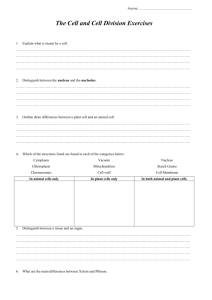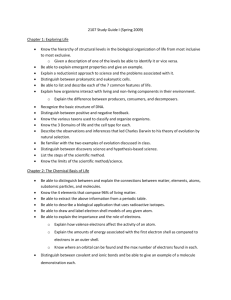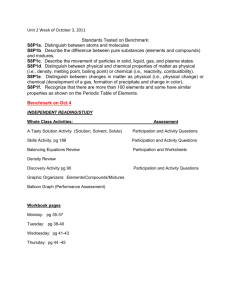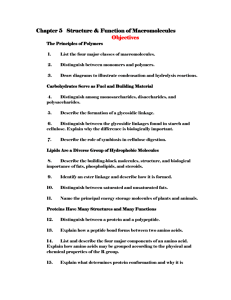KNR 257: Study Guide for 1st In
advertisement
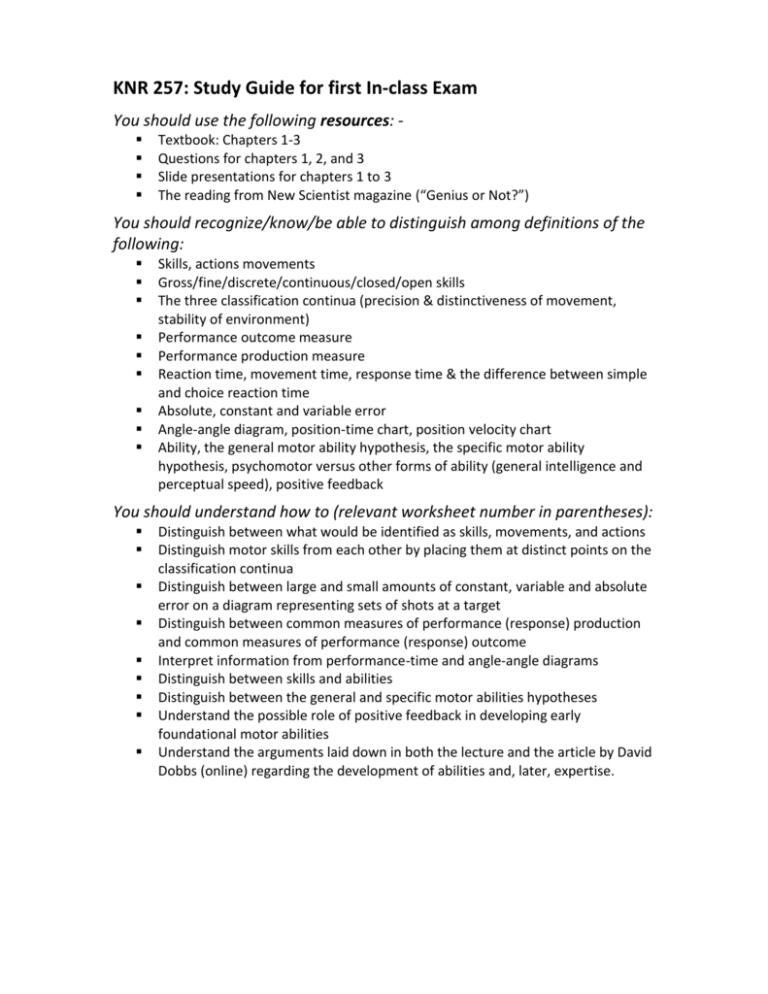
KNR 257: Study Guide for first In-class Exam You should use the following resources: Textbook: Chapters 1-3 Questions for chapters 1, 2, and 3 Slide presentations for chapters 1 to 3 The reading from New Scientist magazine (“Genius or Not?”) You should recognize/know/be able to distinguish among definitions of the following: Skills, actions movements Gross/fine/discrete/continuous/closed/open skills The three classification continua (precision & distinctiveness of movement, stability of environment) Performance outcome measure Performance production measure Reaction time, movement time, response time & the difference between simple and choice reaction time Absolute, constant and variable error Angle-angle diagram, position-time chart, position velocity chart Ability, the general motor ability hypothesis, the specific motor ability hypothesis, psychomotor versus other forms of ability (general intelligence and perceptual speed), positive feedback You should understand how to (relevant worksheet number in parentheses): Distinguish between what would be identified as skills, movements, and actions Distinguish motor skills from each other by placing them at distinct points on the classification continua Distinguish between large and small amounts of constant, variable and absolute error on a diagram representing sets of shots at a target Distinguish between common measures of performance (response) production and common measures of performance (response) outcome Interpret information from performance-time and angle-angle diagrams Distinguish between skills and abilities Distinguish between the general and specific motor abilities hypotheses Understand the possible role of positive feedback in developing early foundational motor abilities Understand the arguments laid down in both the lecture and the article by David Dobbs (online) regarding the development of abilities and, later, expertise.


